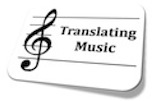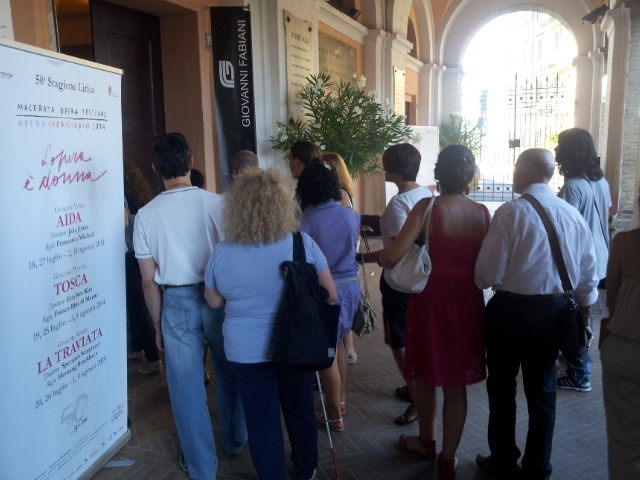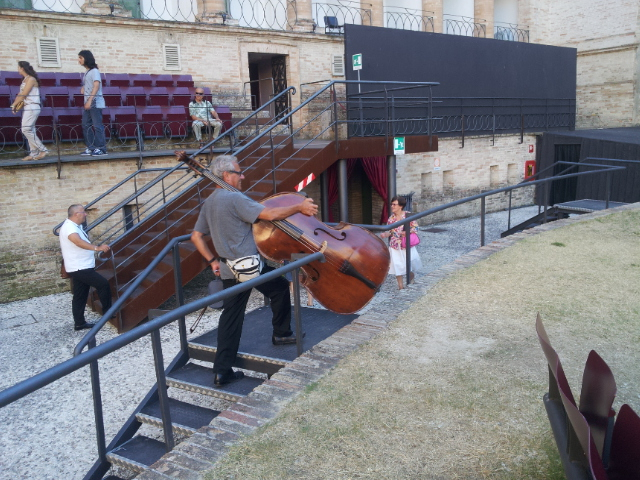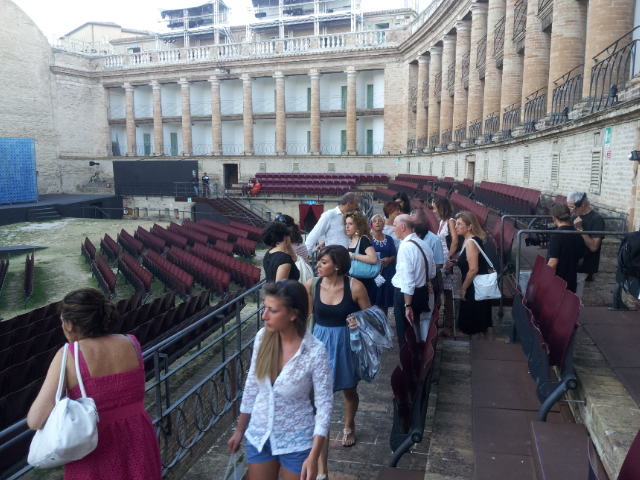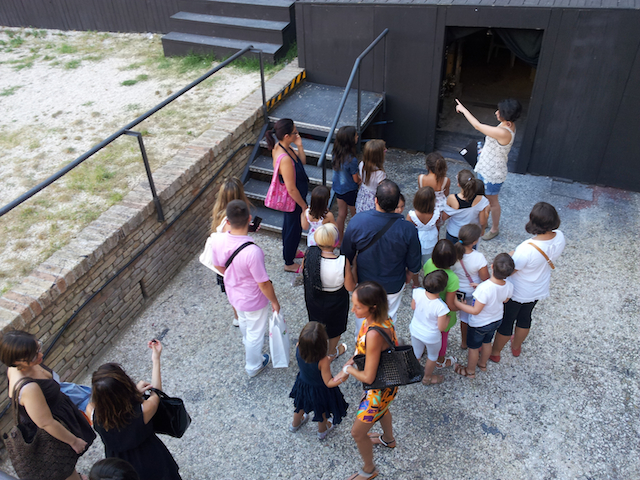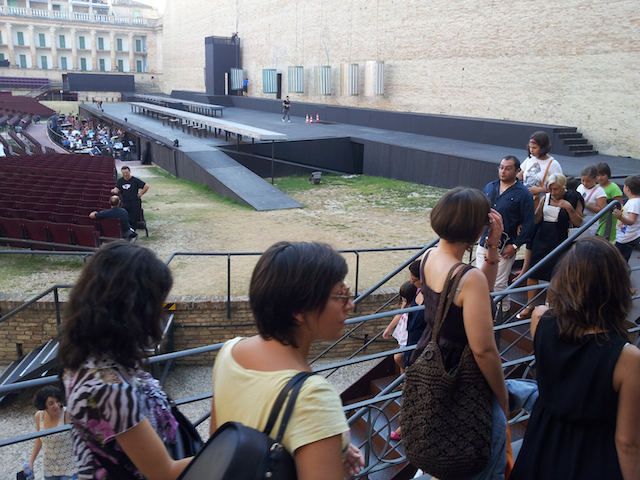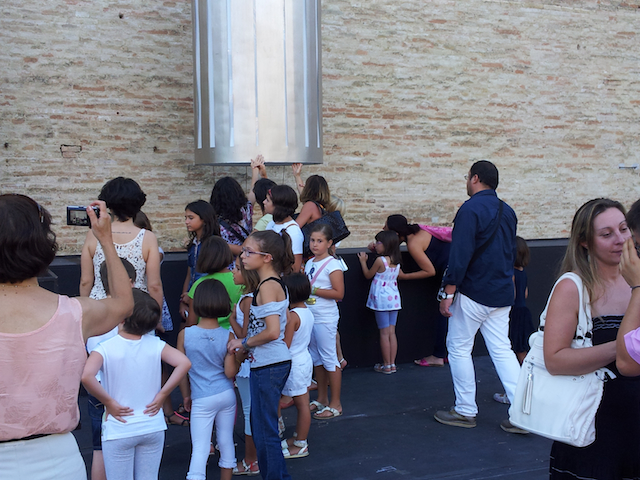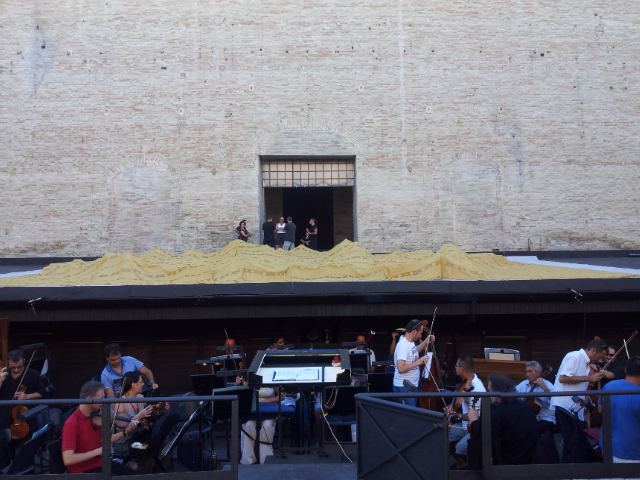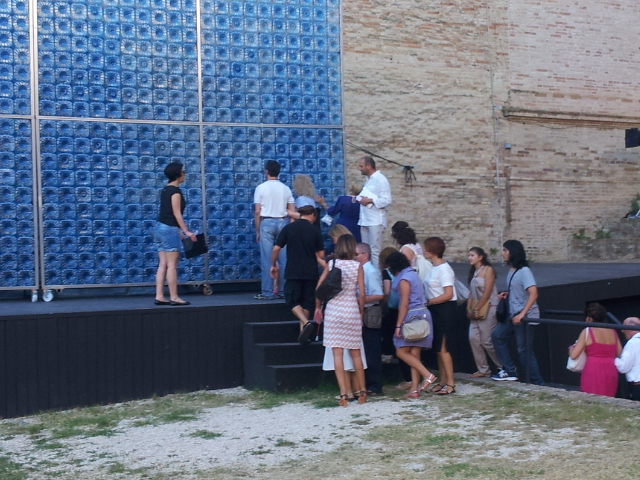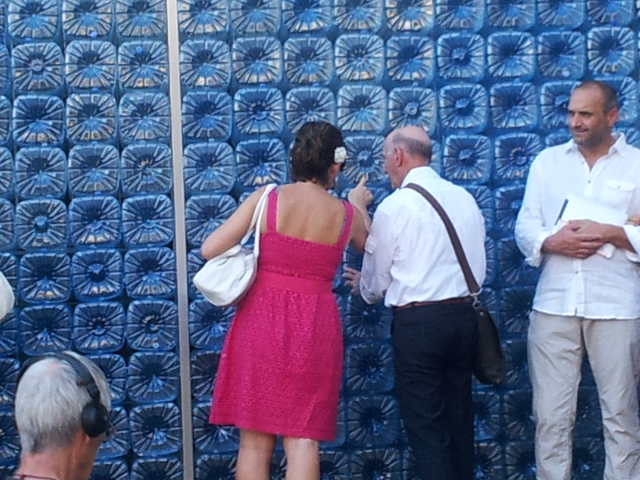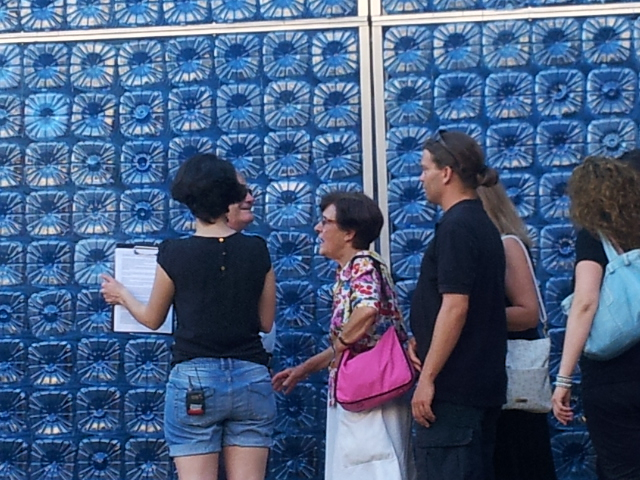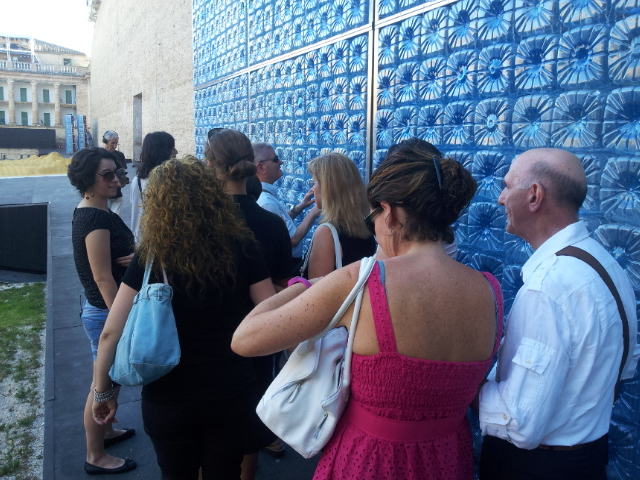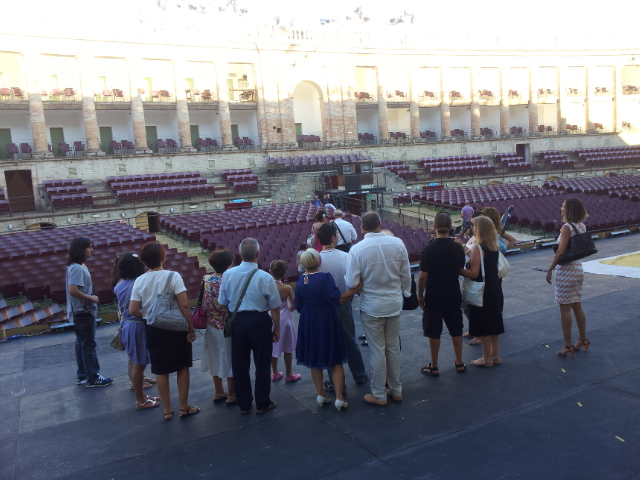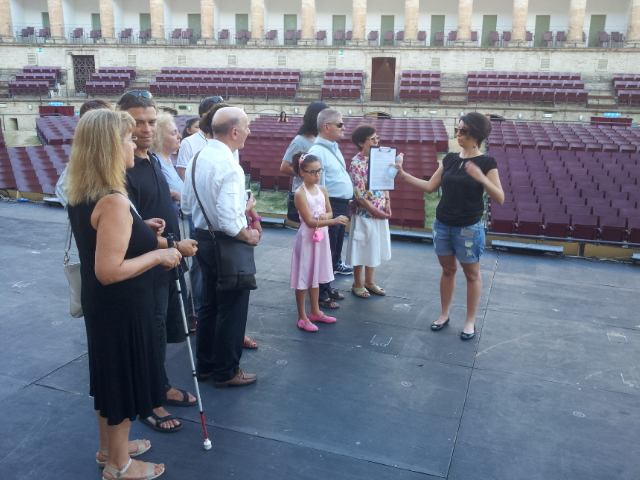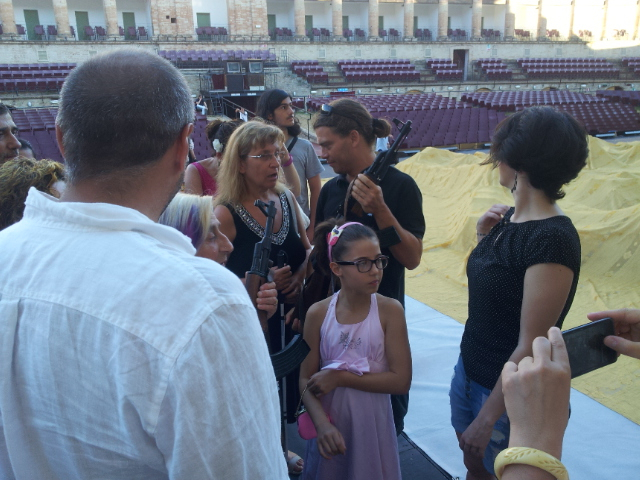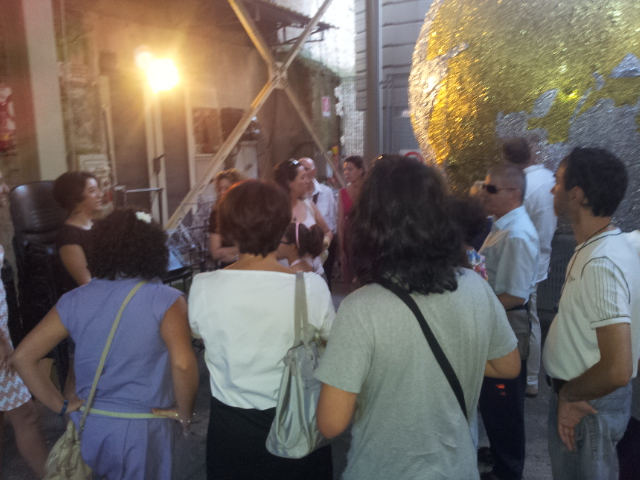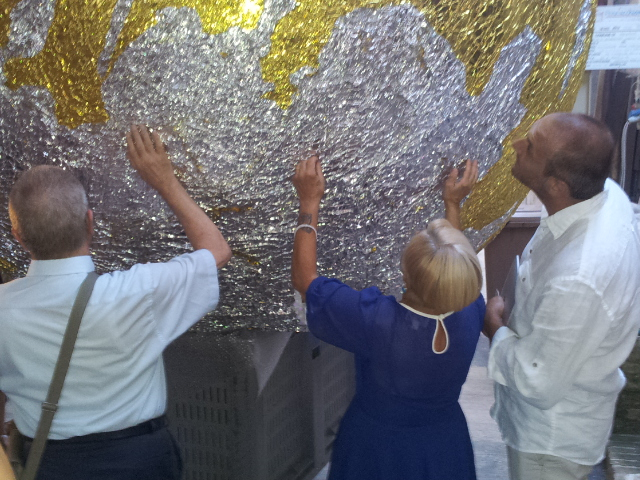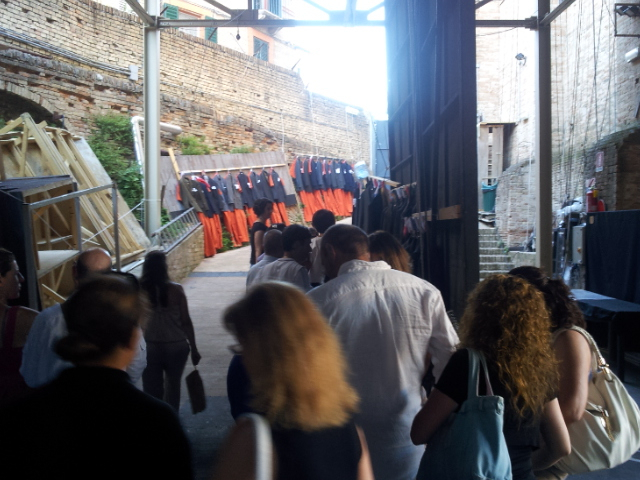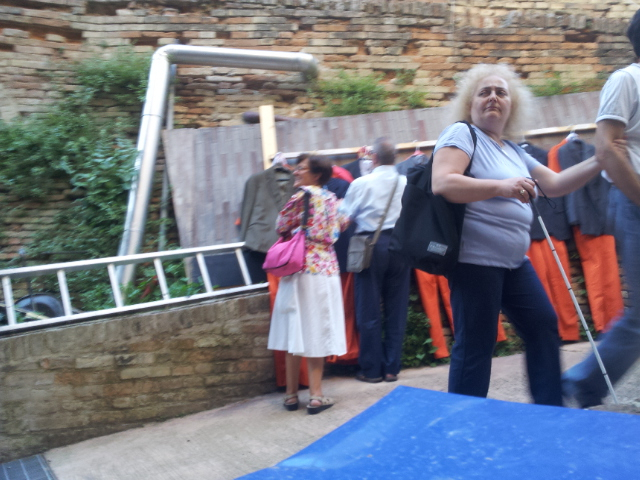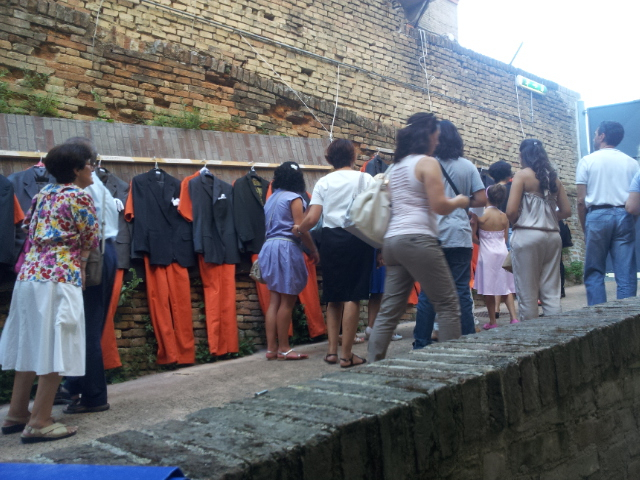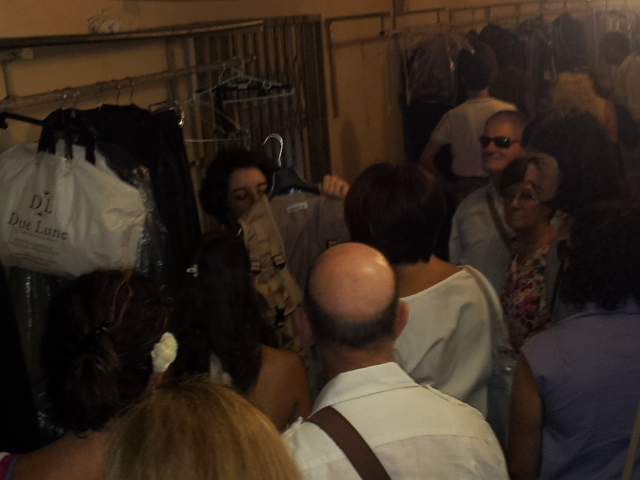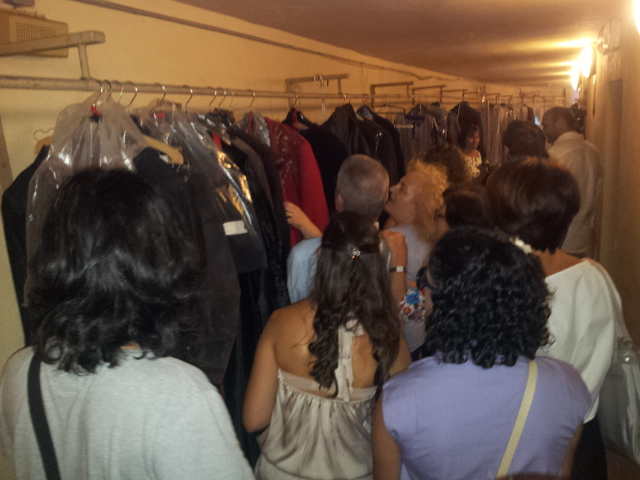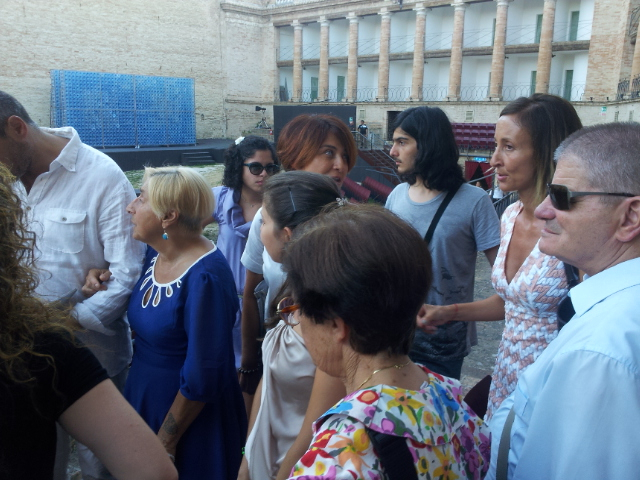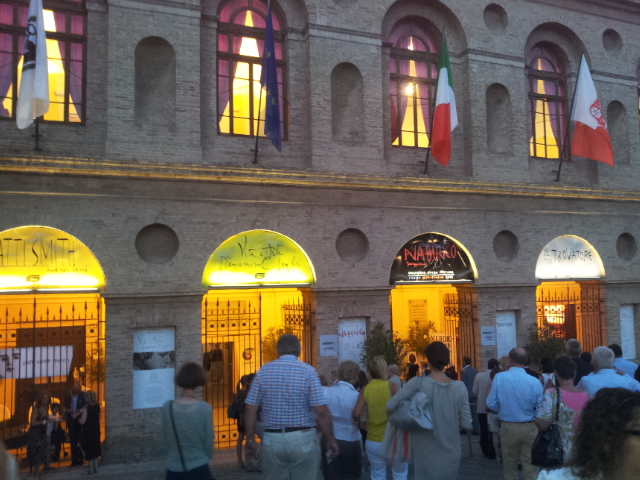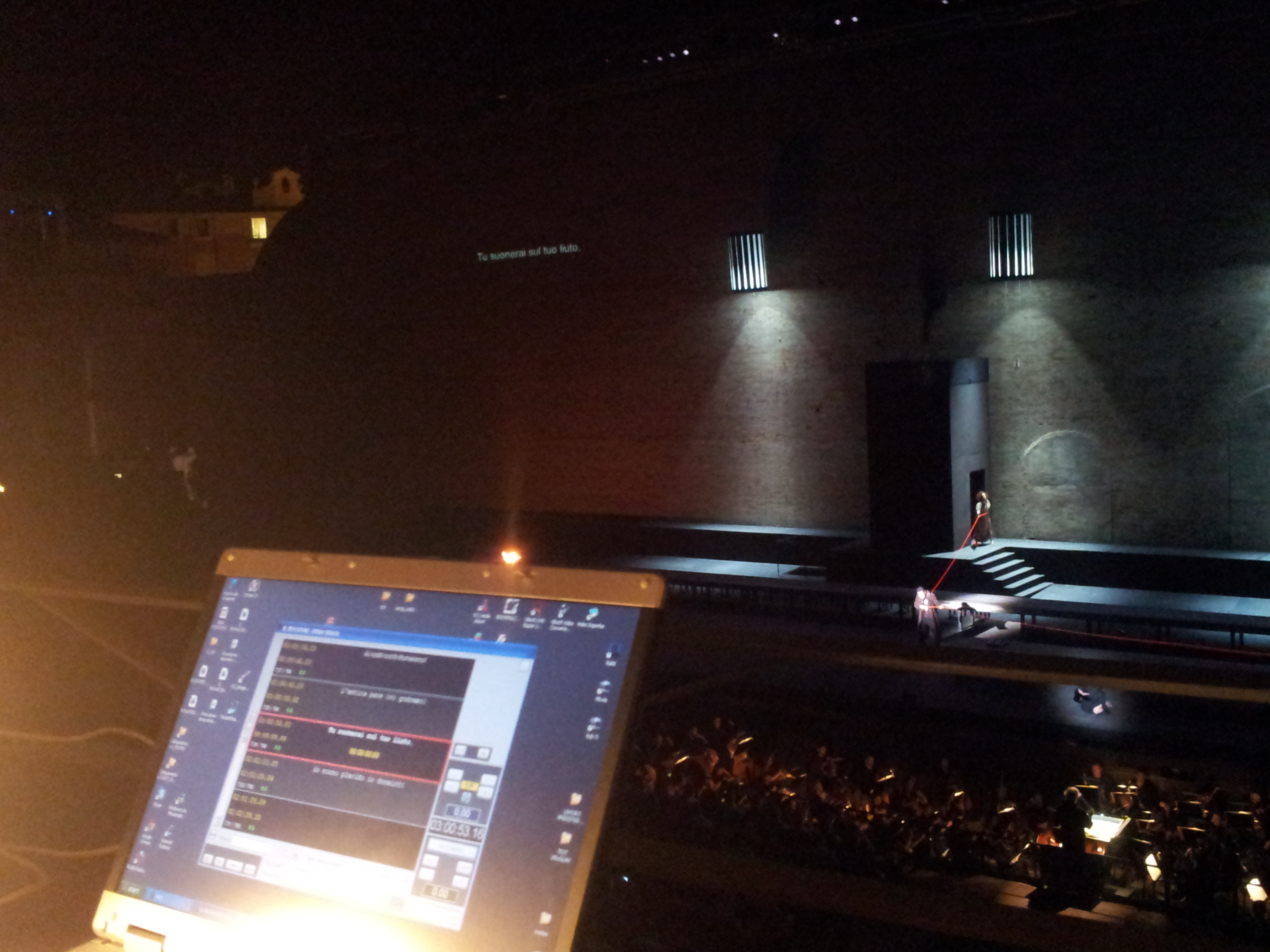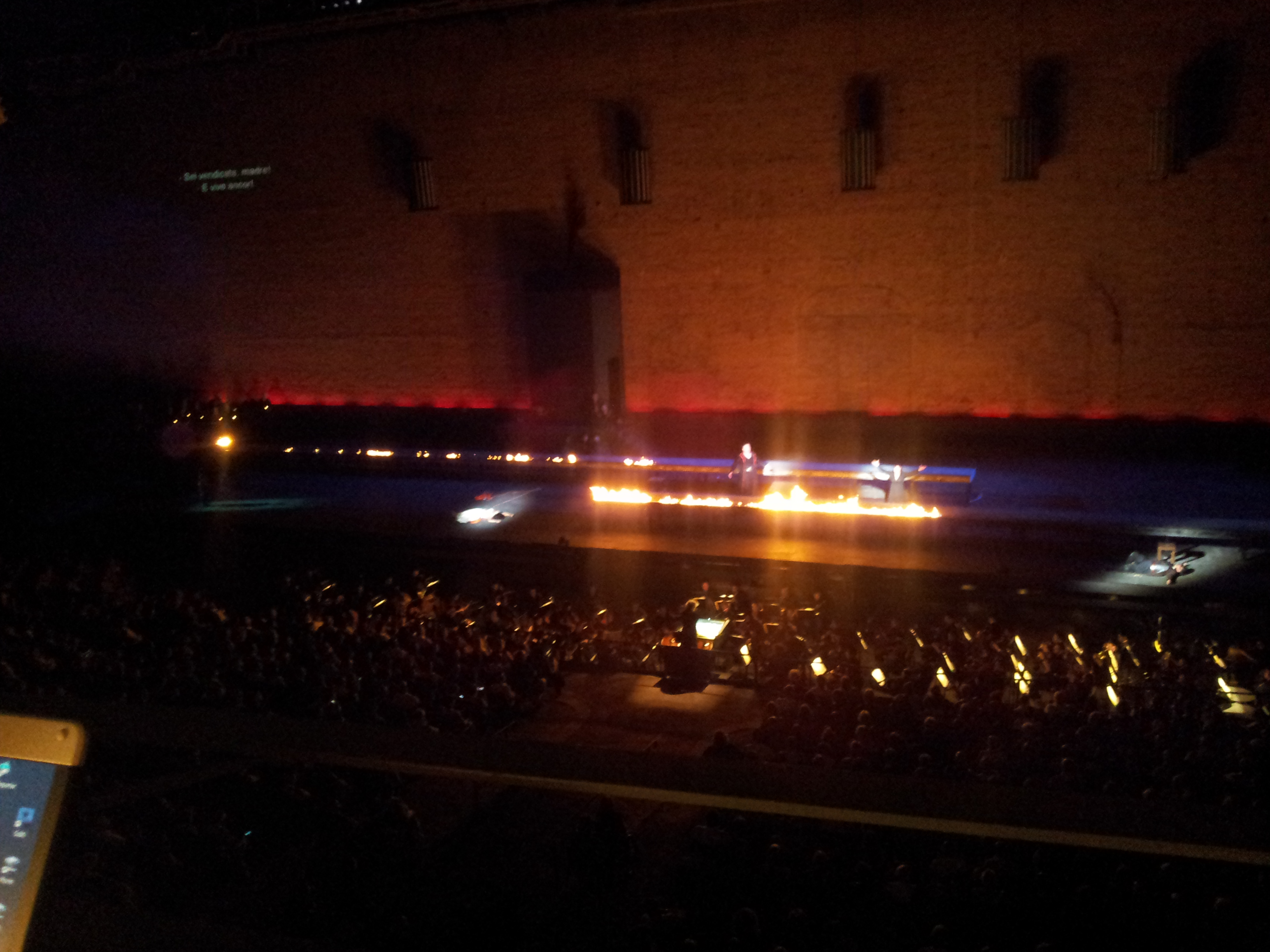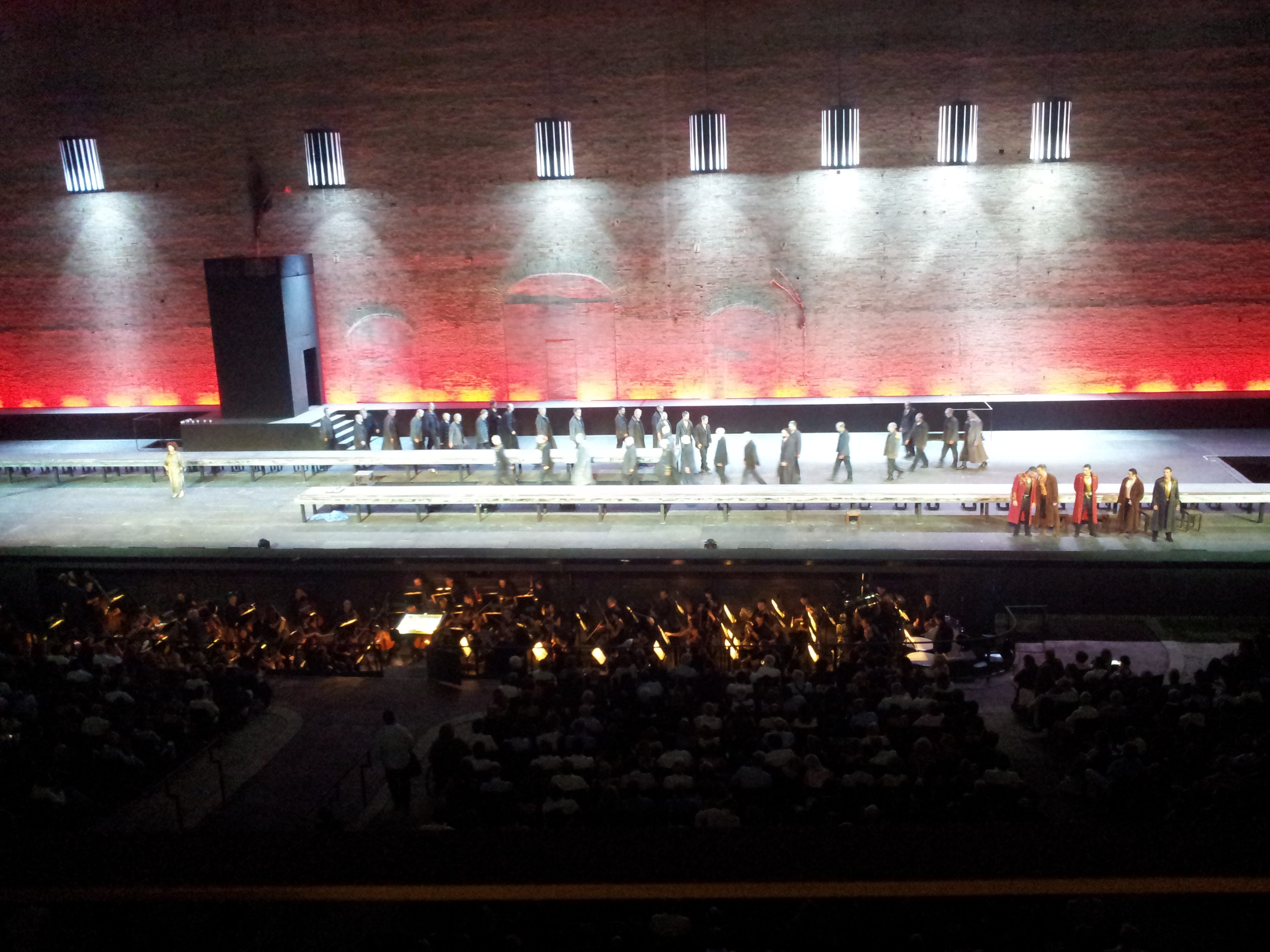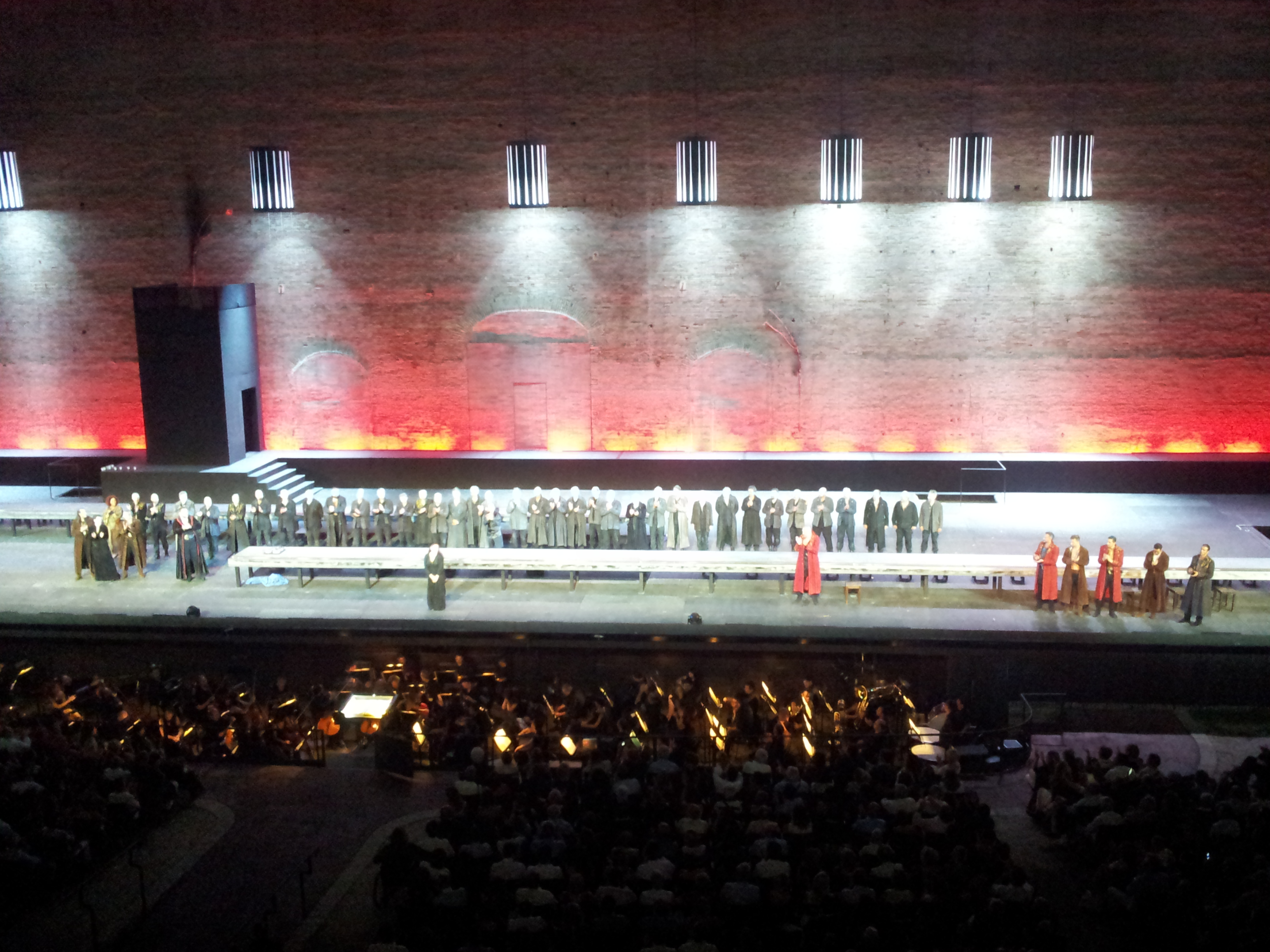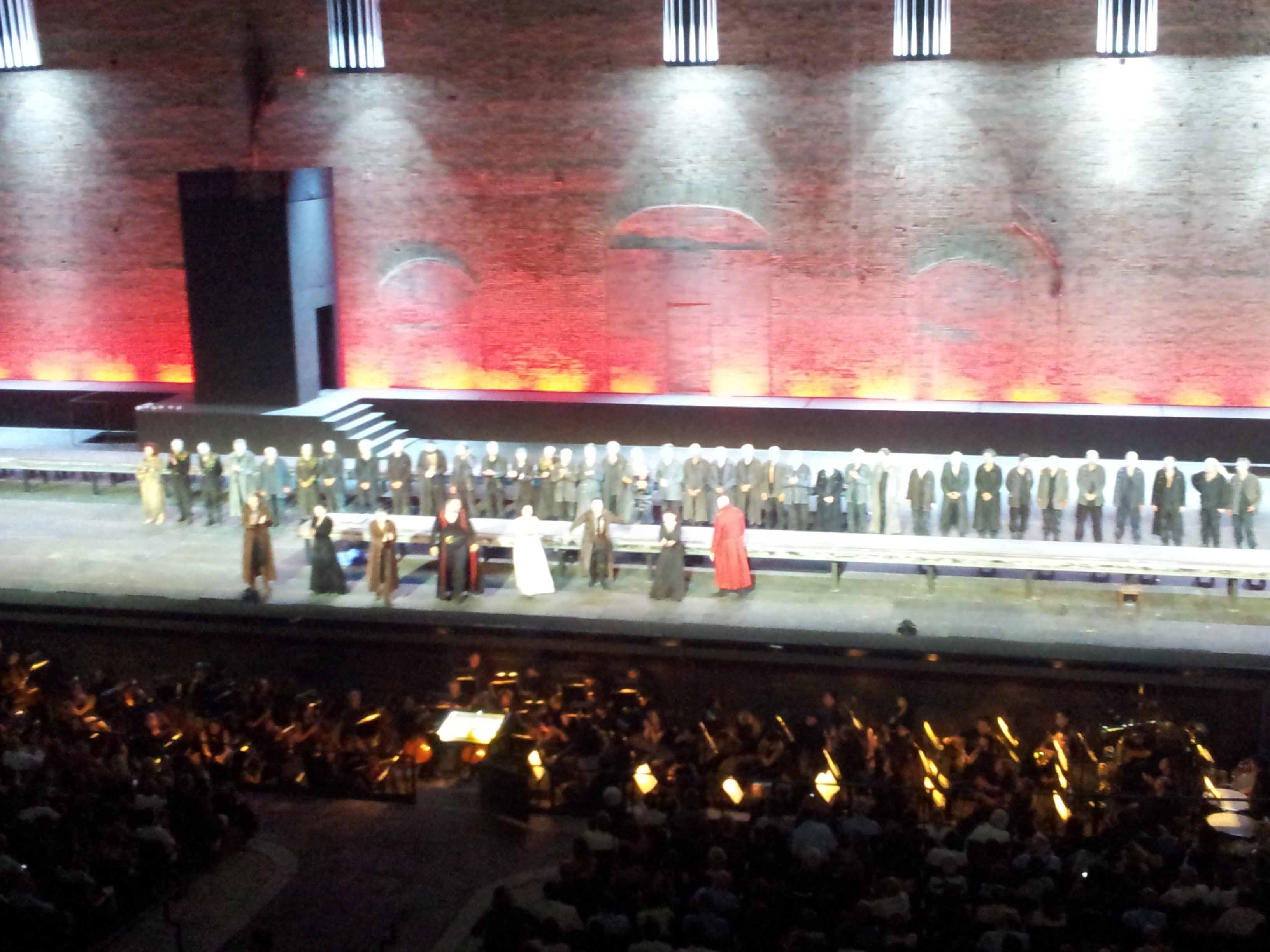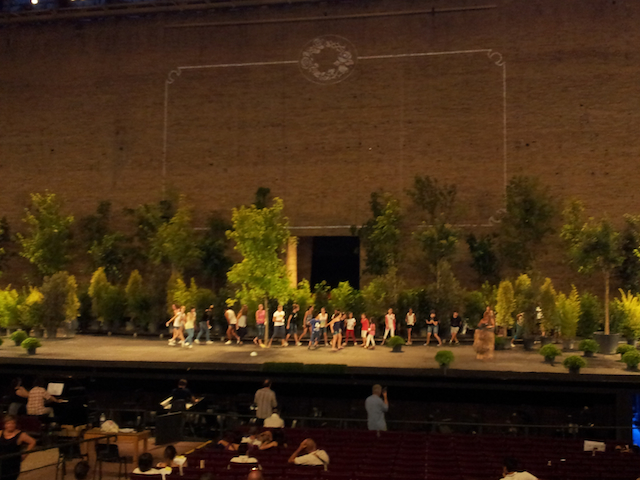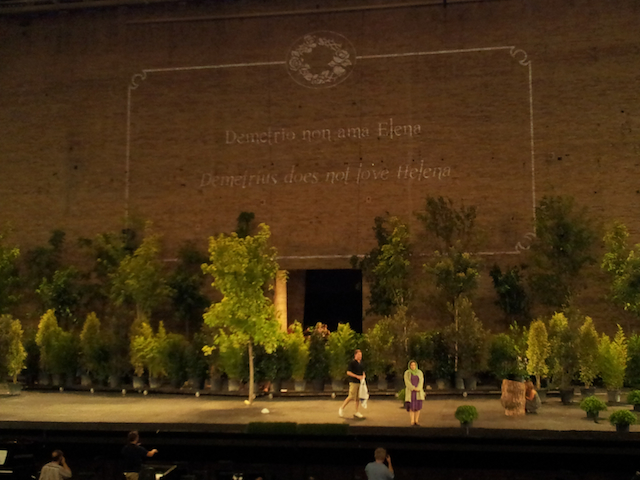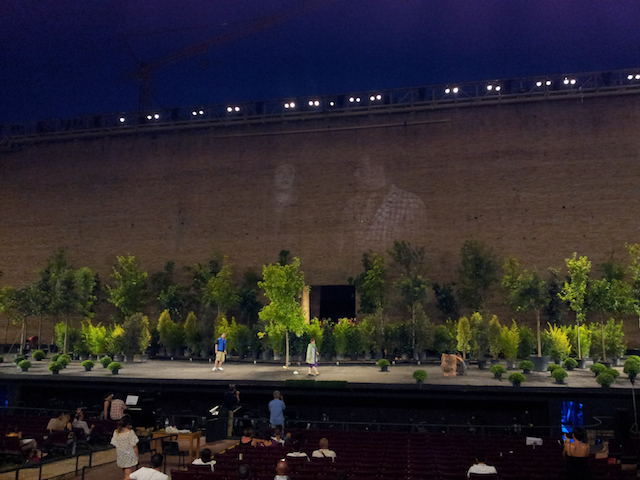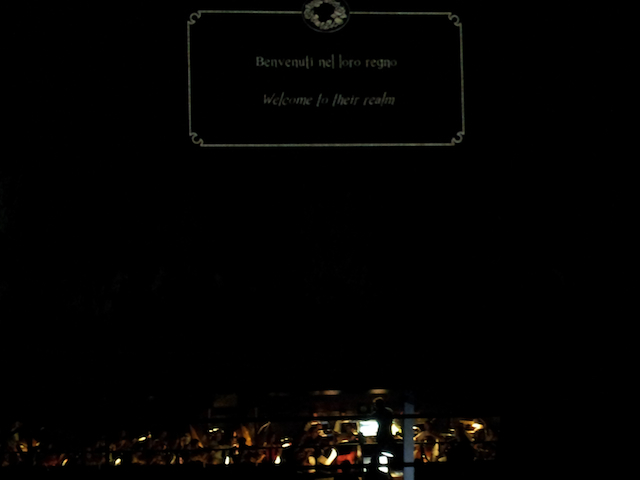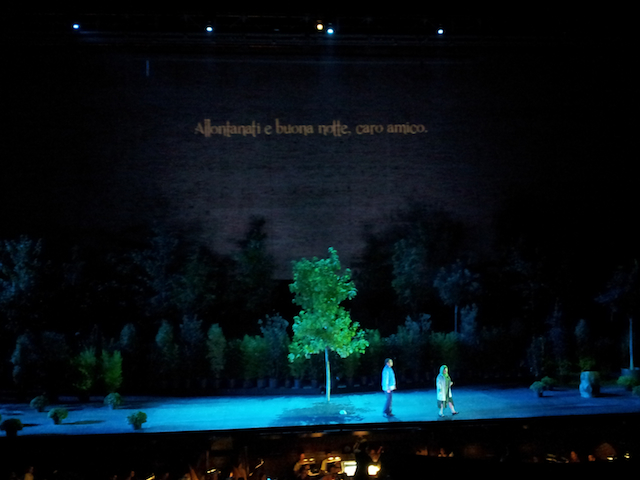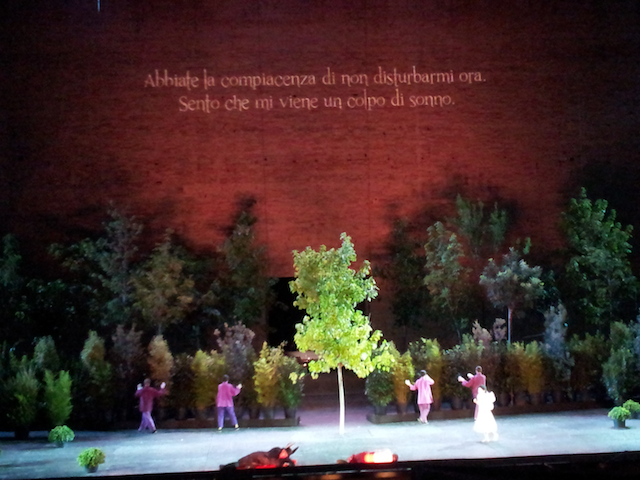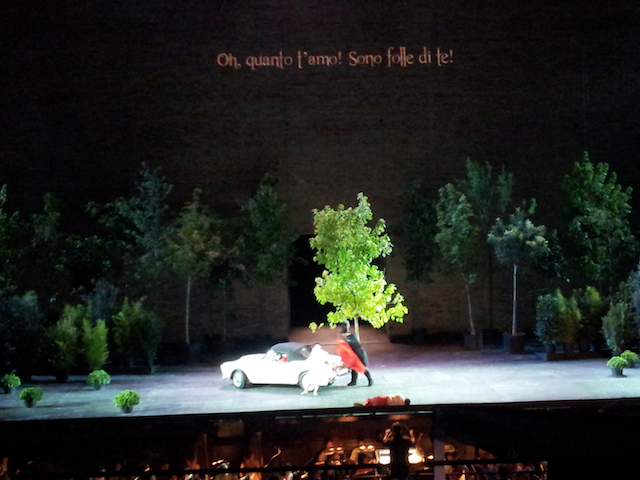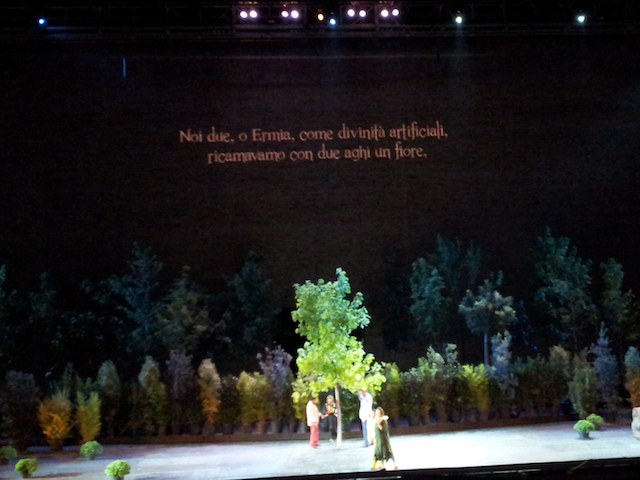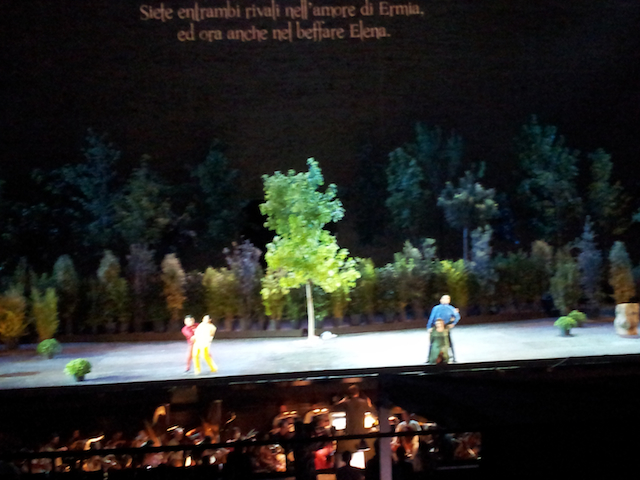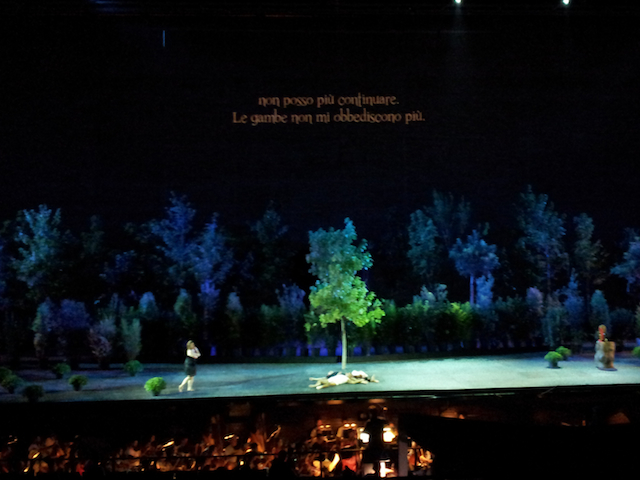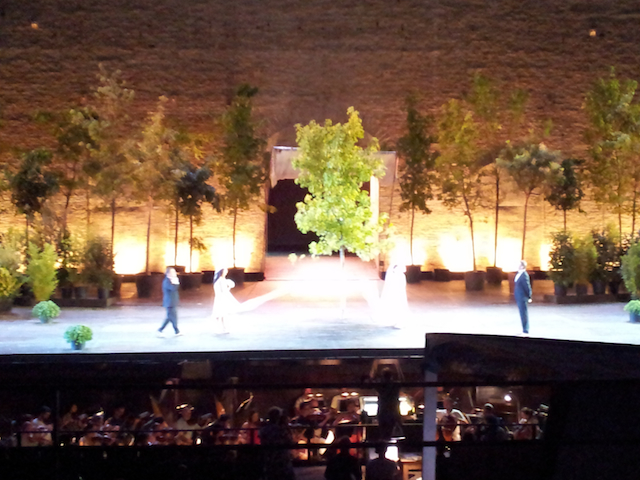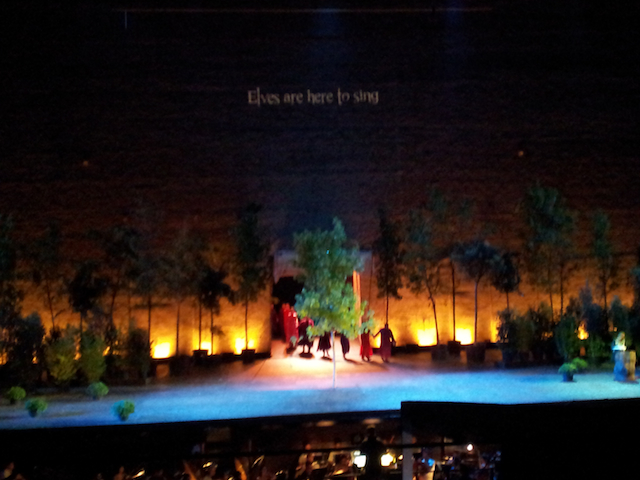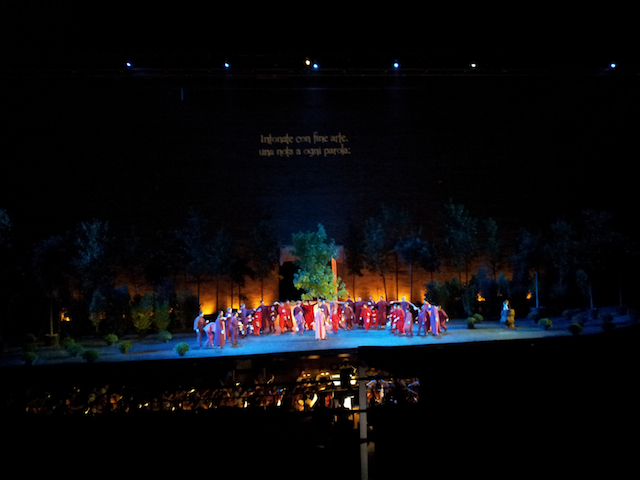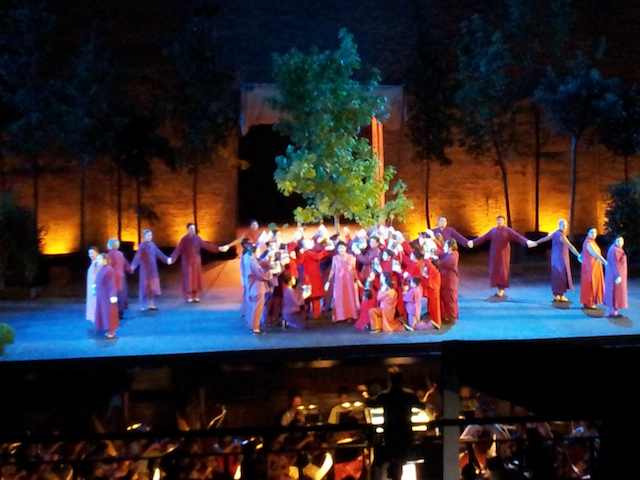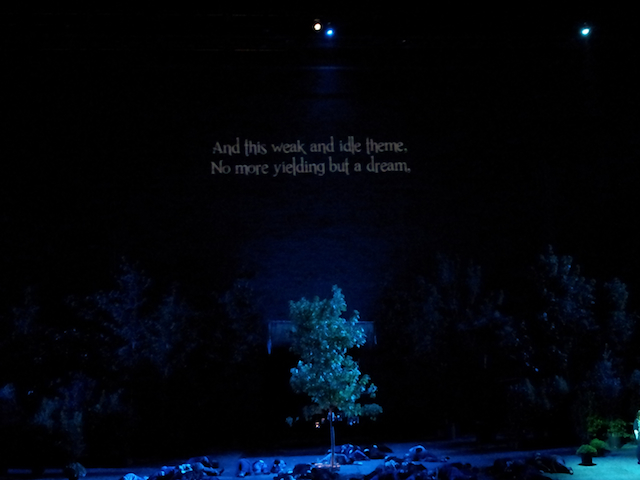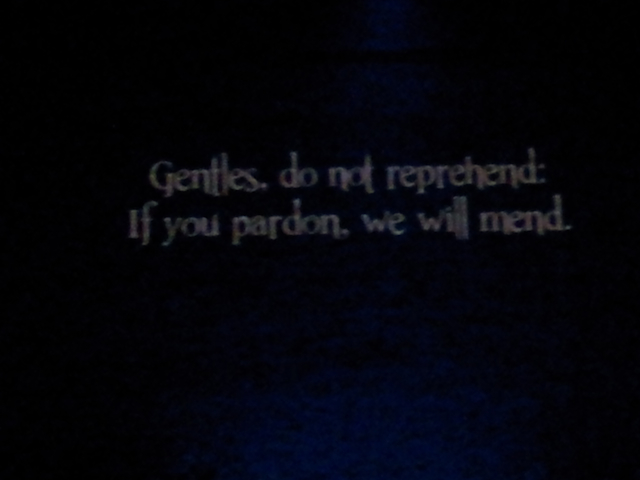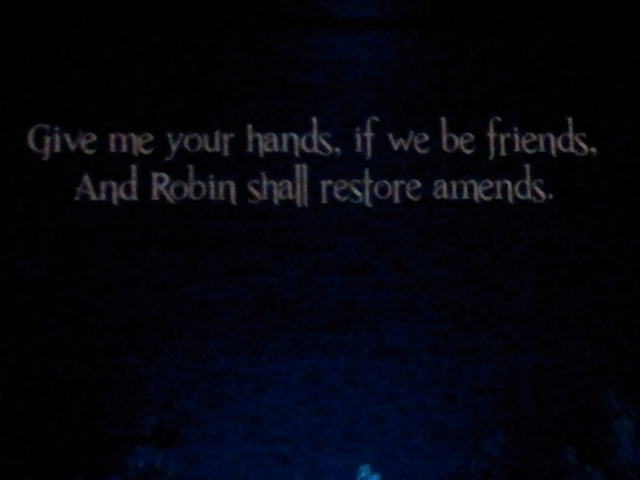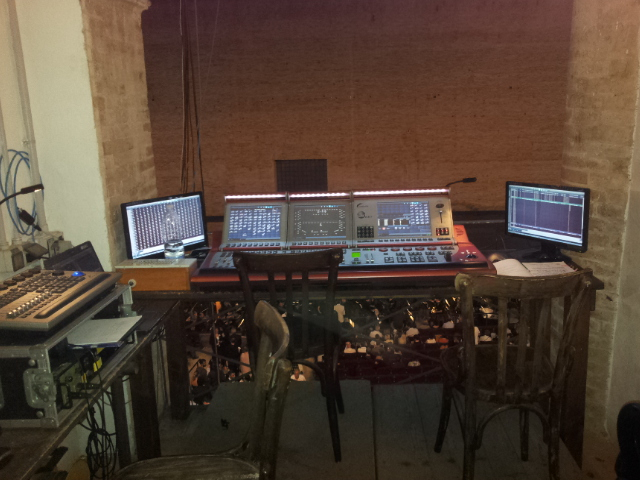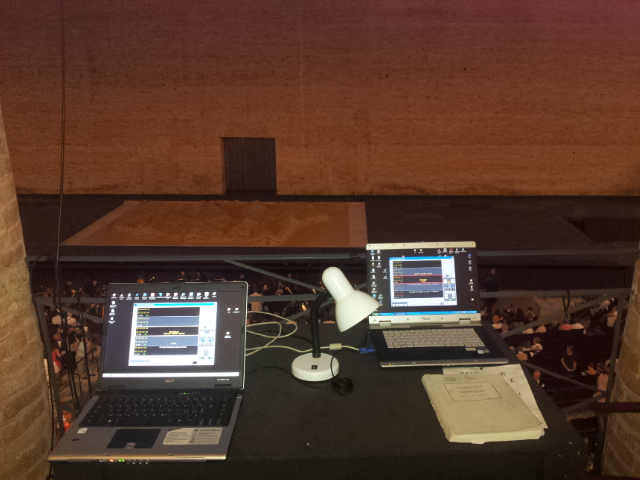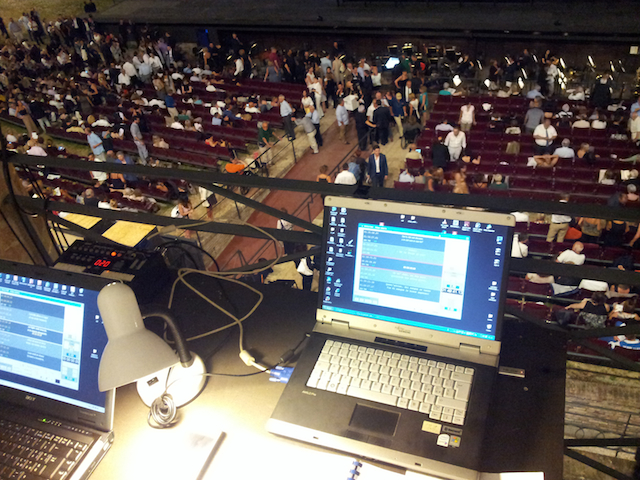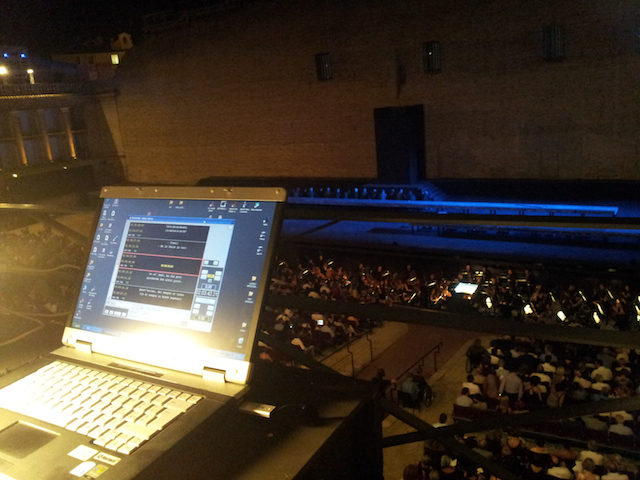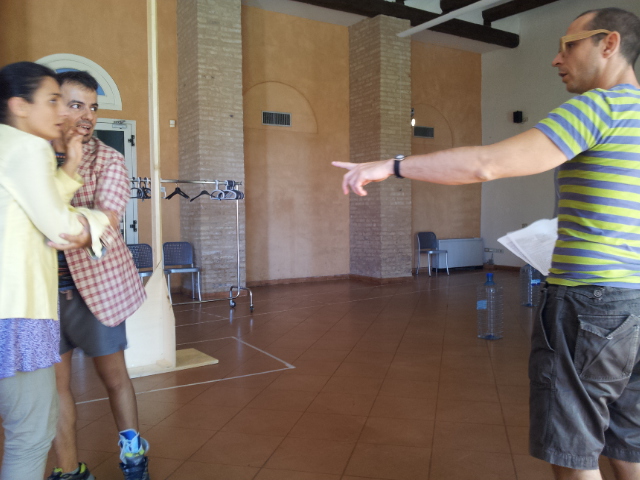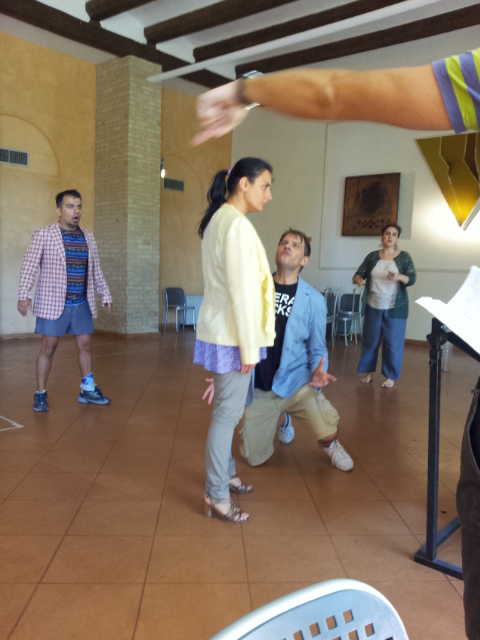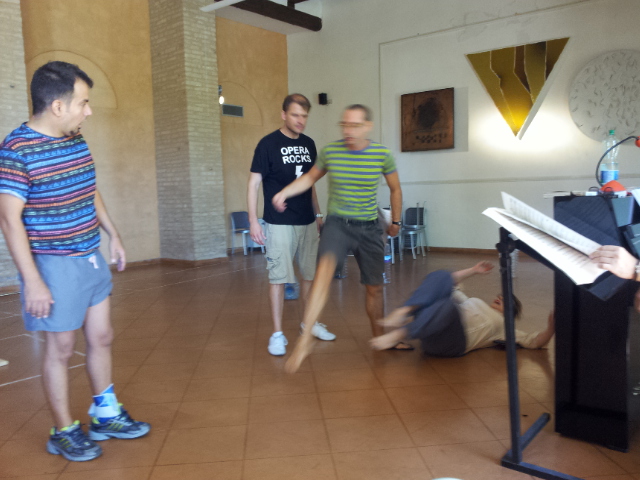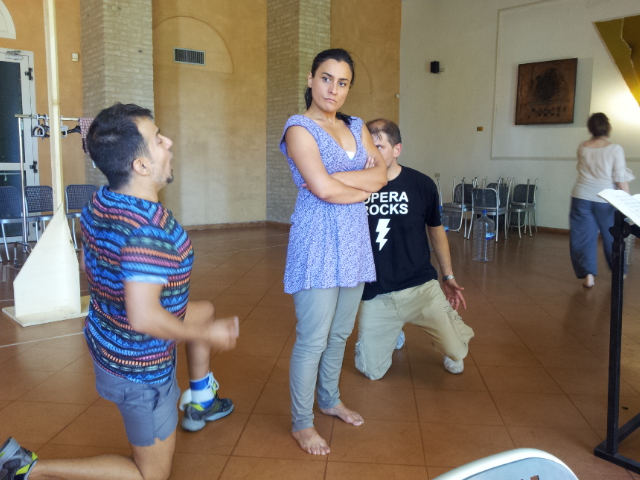August 2013
Click image for touch tour / shows / rehearsals slideshow. Scroll down for interviews.
1. Programme:
August 1st to 3rd: Interviews with the festival director, artistic director, singers, a translator, musician, titling supervisor, assistant maestro and members of the audience, at the Macerata Opera Festival
August 2: 6.45 pm (Sferisterio colonnade arena) Touch Tour of Nabucco for the blind in English and Italian.
August 2: 9 pm (Sferisterio colonnade arena) Verdi’s Nabucco - Live Audio Description in Italian and English with the collaboration of the Unione dei Ciechi e idegli Ipovedenti.
A recorded audio-introduction was available.
August 3: 5 pm (venue TBC): A talk on the reception of Audio Description: meeting and discussion with blind members of the audience. Interviews with blind members of the audiences.
August 3: 9 pm (Sferisterio colonnade arena) Verdi’s Il Trovatore - Live Audio Description in Italian and English with the collaboration of the Unione dei Ciechi e idegli Ipovedenti.
A recorded audio-introduction was also available in Italian and English.
2. Interviews recorded in Macerata:
Luciano Messi: the festival director
Francesco Micheli: the festival artistic director
Virginia Tola: principal soprano
Marco Cempini: Double Bass player
Daniele Gabrielli: translator
Natalia Giro: assistant maestro
A discussion between blind and partially sighted members of an audience
To follow: a Sferisterio touch tour
-----------------------------------------------------------------------------
Macerata Reviews
Little Sweep – Alive and Kicking in a Little Italian Theatre
Il Piccolo Spazzacamino [The Little Sweep: Let’s Make an Opera], Benjamin Britten.
30th July 2013. Macerata Opera Festival, Teatro Lauro Rossi.
Marking Benjamin Britten’s centenary, the Macerata Opera Festival 2013 incorporated two works of Britten (1913–1976). The first, his little, compact and interactive opera for children, Little Sweep, was staged in Italian translation, in a venue which bore affinity to the Jubilee Hall, for which Britten wrote this work, to be performed as part of the Aldeburgh Festival in June 1949. The Macerata Opera Festival audience were integrated into the performance, as in the original production, by rehearsing the four songs with the audience during the first part of the production, which is set as a rehearsal of the opera, performed in the second half.

This delightful venue, with its compact auditorium and classic look, was a prime location for such an intimate work. Those familiar with Britten’s work would recognise similarities with venues with which he worked. The instrumentalists, piano duet, four strings and two percussionists, were in view throughout the performance. Their tone, rhythmic precision and overall architecture created a strong and confident accompaniment to which the singers, actors and movement artists could work. For an international festival which is marked for its efforts to attract new and diverse audiences, which makes great efforts to communicate the text via programme notes, lyric sheets, surtitles and audio descriptions, this interactive performance was highly successful.
Helen Julia Minors
2013
---------------------------------------------------------------------------------------------------------------------
Water and Fire: Biblical Dimensions of a New Production of Nabucco
Nabucco, Guiseppe Verdi.
2nd August 2013. Macerata Opera Festival, Arena Sferisterio.
This intellectual production of Verdi’s Nabucco created a commentary on the plot by thrusting the natural elements of water and fire into the foreground by utilising all the technical artillery of the amazingly wide Sferisterio stage flanked with a stone wall.


Nabucco, Act 1
The impressive soprano role for Abigaille, sung by Virginia Tola, was seamlessly fluent. Despite the busy stage setting, and massive outdoor auditorium, her tone, intonation and articulation projected effortlessly, giving her character a strong assured quality, which perfectly projects her desire to gain the throne of Babylon is Act 2. This role is often a concern for many opera singers, due to its dexterity and vocal range. In tonight’s performance Tola matched the strength of the natural elements, visually represented on stage, with her powerful tone, wide range, and wonderfully balanced phrasing.
An even greater thrill in this performance was provided by the baritone Alberto Mastromarino, as Nabucco. With a bold, agile, clear baritone voice, he was able to match his visual entrance working his way through the crowd in Act 2 with a vocal declamation that he has seized the crown. Mastromarino’s diction was exceptional: in an effort to pose the forthright nature of his character, and in Act 3 an insane dimension to the role, across the expansive stage, he projected out to all angles of the auditorium. In a theatre known for its efforts in fostering accessibility, the surtitles were perfectly cued to his performance, and though they served as a support for his text, the hearing audience hardly needed them. The agility and ease with which he used his articulation made the rhythms of the text fly from the stage. His declaration that the Israelites are free cuts across the orchestra with a timbre akin to the brass section.
This contemporary, commanding, accessible and highly energized performance offered a fresh interpretation of Verdi’s much loved Nabucco. Its internal commentary, staged via complex and highly detailed props, video projection and surtitled subheadings, gave additional depth to a well-known and well-loved Verdi favourite.
Helen Julia Minors
2013
----------------------------------------------------------------------------------------------
Travelling Time and Fire
Il Trovatore, Guiseppe Verdi.
3rd August 2013. Macerata Opera Festival, Arena Sferisterio.
Il Trovatore, Act 2
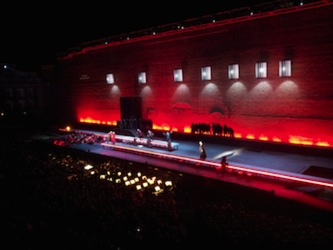
The dramatic logic and lyric capacity of Verdi’s music is emphasised in this new production of Verdi’s Il Trovatore. The two forces of the Count of Luna and the warrior Manrico are pitched against each other and against time. The stage is set with two long tables: to the left, the past, to the right, the future. These tables provide the basis of the historical overview which is sung in Act 1. While highlighting various human conditions, this new version utilises the long stage set, with two long tables and wall lighting, limited colour palette (black and red costumes) and long thin architectural shapes in conjunction with the stage shape, the set illustrates the characters’ recollections of the past and their need to avenge their futures.
The lighting designs of Bruno Poet effectively modifies the auditorium’s stone wall: the red lighting during the Anvil Chorus in Act 2 foregrounds the energy and free quality of the gypsies, which along with the controlled fire lines on the two tables offers a dangerous flavour to the drama. The gruesome retelling of a child in flames is insinuated in the set. Moreover, the restraints used to hold Azucena, in Act 3, are formed from coloured lights.
The subtlty with which the lights are used are matched in the musical interpretation. The solo harp is moved from left to right, to situate the musical telling within the stage set. The vocal demands in Verdi’s score require powerful singers with much stamina. Unfortunately the leading soprano, Leonora, sung by Susanna Branchini, struggled to project her long lyrical lines across the expanse of the Sferisterio. The much more resonant and agile mezzo soprano role, Azucena, performed by Enkelejda Shkosa, suitably projected a stronger more vibrant mature character. Although Leonora was sometimes lost under the orchestral forces her restraint contributed to the reading of her character as a noble and proper lady in love with one and courted by the other lead male character. Both her voice and her character role became subsumed into the collective narrative.
The formal structure of Verdi’s composition is used here in affinity with the structural formality of the stage setting, lighting and colour palette to artfully control the telling of these unusual incidents. The new production utilised the magnificent setting of the Sferisterio to its full, ensuring the large stone wall and long thin stage became an integral part of the drama. In many ways the stage setting here translated the content of musical form and dramatic detail.
Helen Julia Minors
2013
---------------------------------------------------------------------------------------------
A Very British International Centenary
Sogni di una note di mezzaestate, William Shakespeare, Felix Mendelsohn, and Benjamin Britten. 7th August 2013. Dress Rehearsal.
Macerata Opera Festival, Arena Sferisterio
The second work within the Macerata Opera Festival to mark the centenary of Benjamin Britten was A Midsummer Night’s Dream, only it was not presented as one might expect. Rather, the director Francesco Micheli, had the foresight to create a new work by fusing elements of Shakespeare’s original play, with both the musical settling of Mendelsohn and Britten. The differing tones and styles added to the magic and mystery of this play in a new interpretation which privileged the work’s multiplicity. Sogni, Dreams, made for an international, multimedia, vibrant experience.
Utilising the original English text set by Britten and sung in English, along with surtitles in Italian, and a translation of Shakespeare’s text spoken in Italian by Puck, played by Lella Costa, supplemented by subheadings and directions in the surtitles, which were placed centre stage in a 1920s style frame, produced a multilingual feast. Moreover, the video projection seen in some earlier performances in this season was used again, now to introduce the main characters in black and white silent film during both Mendelsohn’s and Britten’s overtures. The text which overlaid this, using the surtitle technology, informed the spectators who is in love with whom.
The characters of Bottom, sung by Andrea Concetti, and Tytania, sung by Pervin Chakar, were impeccable. Their shared energy, and appropriation of the characters were to such an extent that they both embodied their roles completely. Bottom’s entrance in a red, and then white, racing sport’s car was marvellous and utilised the unusual scale of this stage well. Tytania’s hammock, swung between about 30 large trees, in the middle of the stage set, brought the forest quite literally to the stage. The care, dedication, detail and depth to this stage has been unparalleled in other productions in the season.
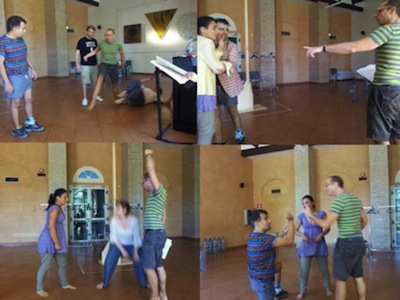
The four main characters were physically and vocally agile, able to project in this very large auditorium and to manifest their characters wholly. Helena (Carmela Remigio), Hermia (Gabriella Sborgi), Lysander (Blagoj Nacoski) and Demetrius (Haris Andrianos) were all exceptional. The detailed choreography, rhythmic precision and focus on articulation to express the emotions of the moment made for a thrilling performance. Not least mention must be given to the children’s roles. The children’s choir and four soloists were laid out among the forest of the Sferisterio stage, coming together in such a clear, vibrato free tone that it felt like a cathedral performance at times.
The combination of both Mendelsohn’s and Britten’s music allowed for the mysterious world of Bottom to be juxtaposed effectively with that of the main human characters. With both overtures, Micheli ensures the rhythmic drive of the fairies is introduced alongside the recitative-like quality of the fairies. Both music and text become fused in the story’s telling. With English sung, Italian spoken and both used as projected text, the multilingual and international nature of this production seemed easy to capture. It was both effective and highly exciting. The setting of the Sferisterio added further depth to a wonderfully polished production which was a highly fitting tribute and contribution to Britten’s centenary.
Helen Julia Minors
2013
Forthcoming, an illustrated talk by Dr. Helen Julia Minors, on the transfer of sense between musics and text, as part of the annual Kingston Connections Public Free Events, at the Rose Theatre, Kingston Upon Thames, July 2014

